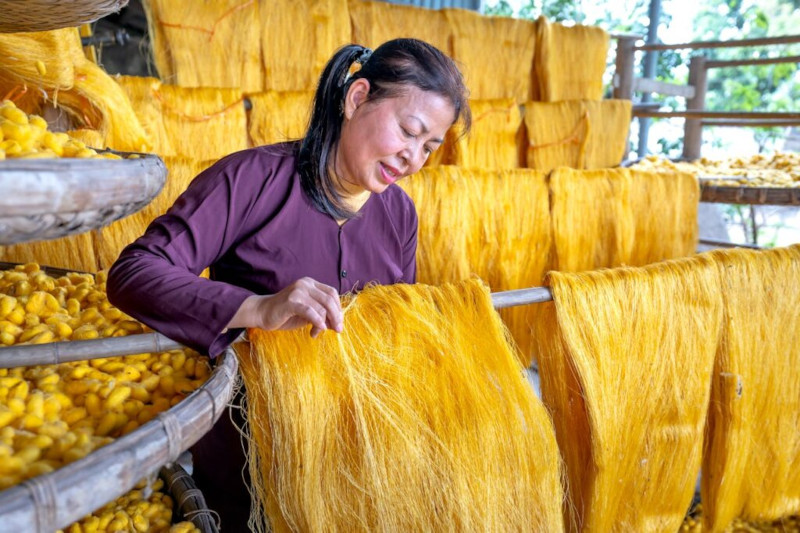The Smooth Allure of Silk: Weighing the Pros and Cons of Knitting and Crocheting with Silk Yarn

Silk yarn, renowned for its luxurious texture and elegant sheen, has captivated the hearts of knitters and crocheters worldwide. Its opulent feel and striking appearance make it a desirable choice for a variety of projects. However, as with any material, silk yarn comes with its own set of benefits and drawbacks. This article delves into the allure and challenges of working with silk yarn in knitting and crocheting.
The Irresistible Benefits of Silk Yarn
- Luxurious Texture and Shine
Silk yarn is celebrated for its incredibly soft and smooth texture. The natural sheen of silk imparts a lustrous finish to finished projects, making them look and feel exquisite. This unique combination of softness and shine is difficult to replicate with other fibers. - Strength and Durability
Despite its delicate appearance, silk is remarkably strong and durable. It can withstand tension and wear better than many other natural fibers, ensuring that your crafted items maintain their integrity over time. This strength makes silk an excellent choice for heirloom-quality pieces. - Breathability and Comfort
Silk yarn is highly breathable, making it an ideal material for garments meant to be worn close to the skin. Its ability to regulate temperature helps keep the wearer cool in the summer and warm in the winter, providing year-round comfort. - Vibrant Dye Affinity
Silk has an excellent affinity for dye, resulting in rich, vibrant colors. Whether you prefer subtle pastels or bold hues, silk yarn can achieve a stunning color payoff, enhancing the visual appeal of your projects.
The Challenges of Working with Silk Yarn
- Cost Considerations
One of the primary drawbacks of silk yarn is its cost. High-quality silk yarn is significantly more expensive than many other fibers, which can be a barrier for budget-conscious crafters. The investment, however, often translates into a superior finished product. - Slippery Nature
Silk's smoothness, while a desirable trait in the finished fabric, can pose challenges during the knitting or crocheting process. The yarn tends to slip off needles and hooks easily, requiring more careful handling and potentially slowing down the crafting process. - Lack of Elasticity
Unlike wool, silk lacks natural elasticity. This can make it more challenging to achieve the desired tension and fit in garments. Projects that require a significant amount of stretch, such as socks or fitted sweaters, may be less suitable for silk yarn. - Care Requirements
Silk yarn requires gentle handling and care to maintain its beauty. Hand washing in cold water with mild detergent and laying flat to dry are typically recommended. This added care can be seen as a drawback for those seeking low-maintenance projects.
Conclusion
Silk yarn, with its sumptuous texture and impressive durability, offers a unique and rewarding experience for knitters and crocheters. Its breathability, vibrant colors, and luxurious feel make it a top choice for special projects. However, the high cost, slippery handling, lack of elasticity, and specific care requirements are factors to consider before embarking on a silk yarn project. Balancing these pros and cons will help you decide if silk yarn is the right choice for your next knitting or crocheting adventure.
Sign up for updates from Andrea Crochets and Knits and be the first to know about new patterns, tips, and cozy creations. Get inspiration for your next project—delivered right to your inbox!
Sources:
Morgan, Jodie. “Silk Yarn - Guide to This Yarn Material & Best Uses.” Knitlikegranny.com, web. May 16, 2023. Accessed 3 June 2024.
Tonia. Knitting with Silk Yarn: Everything You Need to Know – TONIA KNITS.com. N.d. Accessed 10 June 2024.
Hedrick, Tabetha. “The Pros and Cons of Silk Yarn Blends.” SweetGeorgia Yarns, 4 July 4, 2023. Accessed June 10, 2024.